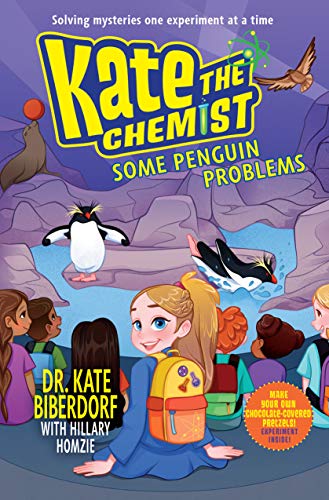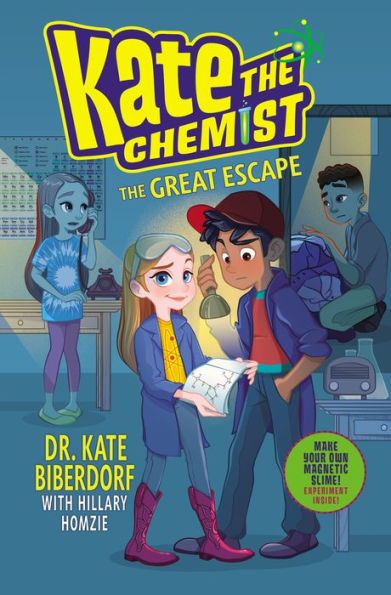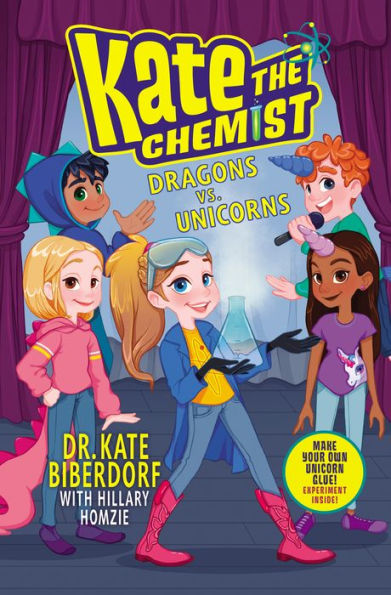When Kate learns that her class is going on a field trip to the aquarium, she is thrilled that she’ll get to see the penguin exhibit! The rockhopper penguins are her favorite. To prepare, Ms. Eberlin assigns the class a project: each student has to do a report about a different animal at the aquarium. Even though Kate gets assigned sea lions, she’s still thrilled to go. Kate, Birdie, and the rest of the class excitedly prepare for their projects until it’s finally Aquarium Day! But then a huge snowstorm threatens to ruin the class’s field trip. Will the snow and ice force the school to cancel the field trip?
When the teacher announces the field trip, she explains the need to have volunteers to chaperone. The lack of volunteers and the weather forecast drive much of the plot. However, Kate’s desire to report on penguins instead of sea lions also adds conflict, partly because Kate wants her classmate to switch topics with her. At times Kate seems like a know-it-all because she uses her knowledge of penguins to prove that she should be doing her report on them. However, in the end, Kate learns to appreciate sea lions and apologizes to her classmates.
The book’s short chapters all begin with definitions of science words such as statistics, sodium, and convection. Simple black and white illustrations appear every 1 to 3 pages. While the illustrations help break up the text, they will not help readers understand the plot or visualize the characters. The book concludes with a recipe to make chocolate-covered pretzels. The last pages of the book show Biberdorf’s other books, The Big Book of Experiments and The Awesome Book of Edible Experiments for Kids.
Some Penguin Problems is an entertaining book with a main character that isn’t perfect but strives to do what is right. In this book, Kate is presented with a dilemma, and in the end, decides to keep a promise even though it means giving up something she really wants. Plus, Kate’s story is packed full of science and animal facts. Biberdorf uses kid-friendly examples and explanations to explain how chemistry is used in everyone’s daily lives. The story also depicts healthy family relationships through Kate’s interactions with her brother and parents.
Science and animal-loving readers will enjoy Some Penguin Problems because of the relatable conflicts and the interesting facts. Through Kate’s experiences, readers will learn the importance of being able to adapt and change. Kate explains, “It was sometimes important to adapt. Even if some of the changes weren’t what you wanted.” Despite the book’s positive aspects, readers who are not interested in science might find the focus on science a little overwhelming. Readers who want to expand their science knowledge should also read the Girls Who Code Series by Stacia Deutsch.
Sexual Content
- None
Violence
- At the aquarium, the students see a blind sea lion that “had shrapnel in his eyes because he had been shot.”
Drugs and Alcohol
- None
Language
- None
Supernatural
- None
Spiritual Content
- None












